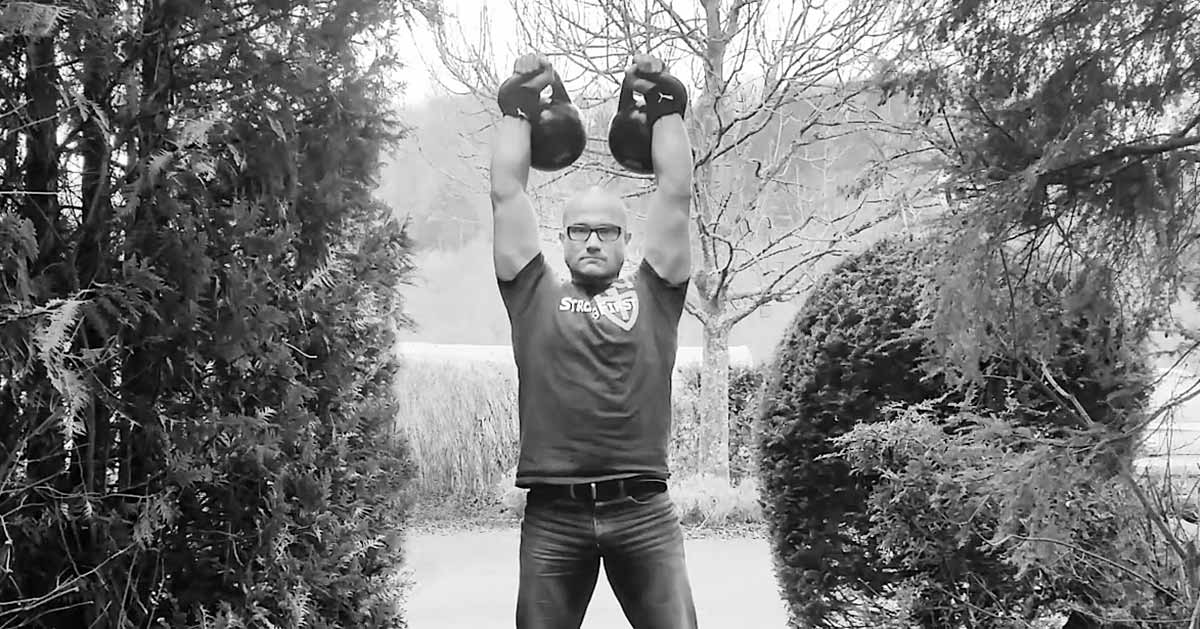Jason Srebnick
Level 2 Valued Member
Hi All,
I was wondering if someone could help me clarify something regarding using MAF heartrate for repeat type training: kettlebell ballistics (or even grinds for something like Iron Cardio) as well as things like sprints on an Air Bike.
If I do a set of [swings, snatches, LCCJ, air bike sprint, heavy bag, etc.] upon completion of the set my HR does not exceed my MAF HR (or I’ve terminated the set once it does) but after the set it continues to go up. I believe this has been referred to as inertia? But I could have the vernacular wrong.
Anyways, my question is should I tweak my intensity (time or weight or reps or watts) so that my HR does not exceed my MAF HR, not even post set/sprint? Or is this increase expected and the “nature” of this type of training? My muscles don’t feel like they are burning and I can pass the talk test (albeit not as easy as the session goes longer).
Once my HR has peaked it actually recovers quite quickly (which I think is good).
Here’s a recent real-world example: I did 8 sets of 10s sprints as hard as I could on an Air Bike. I rested 3 minutes between sprints and was wearing a HR monitor. For sets 1-4 upon completion of the sprint my HR was below or just at MAF and would continue to go up slightly (but not exceeding MAR HR). However, for sets 5-8 while my HR didn’t hit my MAF HR during the sprint, it would continue to go up (went as high as 18 BPM over at one point) after the set was complete. Which was 87% of maximum (using traditional 220-age formula).
But, I guess the heart of my question is: regardless of type of exercise or amount of time ‘sprinting’, rest periods, etc., generally speaking, for repeat type training do you stop once you’ve hit your MAF HR or before it, knowing your HR will continue to go up 5-20 or so beats once the set is complete due to inertia.
I hope I’m making sense here. Please let me know if I can clarify at all and thank you very much in advance for any insight.
My goal is general health and longevity, general fitness, and being “ready” (to help a neighbor move a couch, shovel snow, etc.). Although I am looking to get back into recreational martial arts and hockey and hoping this will lay the foundation for those.
I was wondering if someone could help me clarify something regarding using MAF heartrate for repeat type training: kettlebell ballistics (or even grinds for something like Iron Cardio) as well as things like sprints on an Air Bike.
If I do a set of [swings, snatches, LCCJ, air bike sprint, heavy bag, etc.] upon completion of the set my HR does not exceed my MAF HR (or I’ve terminated the set once it does) but after the set it continues to go up. I believe this has been referred to as inertia? But I could have the vernacular wrong.
Anyways, my question is should I tweak my intensity (time or weight or reps or watts) so that my HR does not exceed my MAF HR, not even post set/sprint? Or is this increase expected and the “nature” of this type of training? My muscles don’t feel like they are burning and I can pass the talk test (albeit not as easy as the session goes longer).
Once my HR has peaked it actually recovers quite quickly (which I think is good).
Here’s a recent real-world example: I did 8 sets of 10s sprints as hard as I could on an Air Bike. I rested 3 minutes between sprints and was wearing a HR monitor. For sets 1-4 upon completion of the sprint my HR was below or just at MAF and would continue to go up slightly (but not exceeding MAR HR). However, for sets 5-8 while my HR didn’t hit my MAF HR during the sprint, it would continue to go up (went as high as 18 BPM over at one point) after the set was complete. Which was 87% of maximum (using traditional 220-age formula).
But, I guess the heart of my question is: regardless of type of exercise or amount of time ‘sprinting’, rest periods, etc., generally speaking, for repeat type training do you stop once you’ve hit your MAF HR or before it, knowing your HR will continue to go up 5-20 or so beats once the set is complete due to inertia.
I hope I’m making sense here. Please let me know if I can clarify at all and thank you very much in advance for any insight.
My goal is general health and longevity, general fitness, and being “ready” (to help a neighbor move a couch, shovel snow, etc.). Although I am looking to get back into recreational martial arts and hockey and hoping this will lay the foundation for those.

